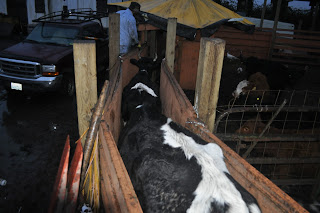I wrote in this blog entry about a townhouse that I purchased at a recent tax auction. Here's the followup:
The banks holding the mortgage took a $210k loss
The first thing that I was surprised at was that the two banks that held a combined first and second mortgage of $210k mortgage on the property didn't redeem the property for the $14k in back taxes due. If they had, they could have foreclosed on it, and sold it, and come out with maybe $130-140k. I expected the property to go off the auction, but the lender didn't redeem it. when you buy a property at tax auction, tax liens are senior to all others, and so the first and second mortgages on this property got erased. Sorry Citibank, who apparently held the 1st mortgage, and 1st choice mortgage, who held the 2nd.
Why didn't the bank redeem the property for the back taxes?
So I wondered why the bank didn't redeem it. This story helped explain it. Summary: the company that funded the mortgage is in bankruptcy, and various people are being sued, and none of them are cooperating with each other. This property fell through the cracks, and the banks take a big loss. I'm guessing that citibank bought the assets of the smaller bank.
Why didn't the previous owner just make the payments?
I asked the previous owner why he didn't pay his mortgage. I expected something along the lines of I lost my job, or there was a medical emergency or what have you. the answer was simpler: They just decided to stop paying. "We had a first and a second on this property, for a total of about 210k. This property is worth $180k. If we paid the back taxes of $14k, we'd be in the hole $44k, and given the market, it would take us 10 years go get back to even, so we decided to let it go."
What was the previous owners plan?
My opinion is that I think they were counting on the house going through foreclosure and that it would take 6 months or a year -- the tax auction happened about 2 months after they stopped making the mortgage payment, but they hadn't paid their property taxes in years already. No idea why they didn't pay those taxes. Or the bank didn't pay those taxes.
1 week ago
























































